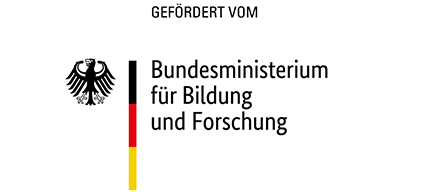Hauptinhalt
Panel III: Religious Objects as the Plaything of Hegemonic Actors
Panel III discussion: 05/June/2021 9:30 am to 10:30 am, BigBlueButton
Dr. Simon Kofi Appiah (University of Cape Coast)
Afterlife of Fetish: ‘Liminal Ethnography’ in the Study of Religion/s
The idea of studying religion/s from the material perspective has quickly gained importance, becoming one of the currently favored approaches in the discipline. At the onset of the study of religion/s, however, religious materials were characterized as fetish, a concept which, unfortunately, gained notoriety for representing everything wrong about (knowledge regarding) religion, especially, in Africa. However, with the rise of the material approach in the study of religion/s, the concept of fetish is being rehabilitated as a productive research approach. In this concept paper, I propose that the aim of scholars to improve knowledge production about religion/s by interpreting the relationship between religious materials and their users is better served by paying close attention to the subjectivity of religious materials (read fetish). I argue that the consideration of fetishes as active and living subjects (Hazard 2013), a thoroughly African view of religious materials, provides a curious intersection between the cultural other (positionality) and the epistemological other (liminality) in research. Liminality transforms the emic-etic binary into a threshold of an outsider-insider nexus and initiates a paradigm shift from “positional” to “liminal ethnography” in the study of religions. This shift is necessary for unpacking the pulsating and multi-dimensional layers of relations that religious materials evoke.
Dr. Patricia Rodrigues de Souza (Pontifical Catholic University of Sao Paulo)
Decolonizing Museums: Tupinambá feathered cloaks in European Museums
Some of the most famous European museums, started as ‘cabinets of curiosity’, with pieces travelers would gather from all over the world. Today, great part of their collections is composed of pieces of traditional peoples from colonized lands. Such pieces, produced from different epistemes, and within different ontologies, classified from Western point of view as things, are in many cases, for those who made it living beings and not things.
Although this ‘things’ are highly appreciated and well taken care in Western museums, they are not shown to the public as what they really are in the terms of those who produced them. This dynamic of European appropriation and re-signification still hierarchizes epistemologies, keeping ‘South’ or non-Western cosmoperceptions at the bottom of list. Also, such ‘things’ may be, even today, be a great loss to traditional peoples. I explore, as an example, the case of Tupinambás, a traditional Brazilian tribe. Although some of them survived colonization period, they had all their ritual feathered cloaks taken away, among other ‘things’. Along with such ‘things’ the know how to make them was also affected. Here I show Celia Tupinambá, a member of the tribe visiting a French museum and getting to know a piece made by her ancestors, now kept in the basement of a French museum. As Tupinambás consider the cloaks as beings they think the cloaks should be together with them. Not being able to retrieve the actual pieces, Celia Tupinambá has thought of a project to teach other Tupinambás how to make feathered cloaks, according to the cloak she saw at the French museum.
Dr. Susanne Rodemeier (University of Marburg)
Objects from Colonial Contexts: Limits and Potentials of their Musealization
My lecture puts up for discussion the limits and potentials of musealization on the basis of objects from the Religionskundliche Sammlung (Museum of Religions in Marburg), which were acquired in the 1930s by the then director and originate from the former German colonial territory, today Papua New Guinea. The colonial context alone makes it necessary to clarify the provenance of these objects in more detail and to ask how they should be dealt with in the future. Since they were once used without exception in a religious context, this question is particularly sensitive. The source material on these objects is very little, but there are several indications that we are dealing with objects that were understood as powerful ancestors and that were appropriated by missionaries taking advantage of unequal power relations. By means of an exhibition in which research processes on objects from colonial contexts are visualized and which is constantly expanded depending on the state of research, I want to show the potentials and limits of musealization of religious objects.



